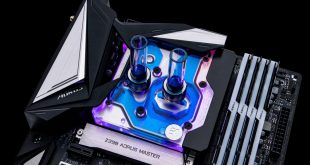Users can select from ASRock's pre-defined ‘Auto OC' modes to boost their CPU speed.
There are four different settings which can provide CPU frequencies of 4200MHz, 4400MHz, 4600MHz and 4800MHz.
The settings are very novice and are too conservative with CPU voltage. Our system managed to boot with the 4200 and 4400 MHz settings, but both the 4600 and 4800 MHz options were unstable.
In trying to push for a CPU overclock, we disabled the power savings and set the load-line calibration (LLC) to 100%. We also disabled AMD's Turbo Core in favour of a static overclock.
We originally disabled LLC, as advised by the motherboard, but this resulted in CPU voltage fluctuations of almost 200mV more than what we set in the BIOS. With our CPU approaching the dizzying heights of 1.7V, we jumped to the other end of the scale and set LLC to 100%.
ASRock clearly has some minor glitches to fix in its UEFI interface. Clearly, 21.5 * 200 isn't 4730! Thankfully, this setting corrected itself after we selected the appropriate multiplier and rebooted.
We managed to successfully achieve a 5.00GHz CPU frequency with a voltage of 1.575V. Normally, we wouldn't push the FX-8350 CPU's voltage past 1.55V, but due to our LLC configuration, the operational voltage remained below 1.55V.
Unfortunately, the system proved that this setting was unstable by ‘shutting down' two cores during Prime95 load.
Even though two cores of the system were unstable during a Prime95 load, CPU-Z validator showed the system as stable – this is not entirely correct as not all cores were stable.
We did manage to boot at a CPU frequency of 4.8GHz with a voltage of 1.55V (in the BIOS). Prime95 proved that this setting was on the verge of stability with certain cores constantly changing their activation and operating frequency. 4.8GHz should be usable with a tweaked voltage setting, but this would likely require a better CPU cooler than the CM Seidon 120M that we are using.
We were looking for complete stability, so decided to reduce the frequency slightly.
We tested 4.6GHz at 1.5375 BIOS-set voltage (which peaked at less than 1.5000V in Windows), and it proved stable. In the end, we settled for 4.6GHz with a voltage of 1.55V. The extra 12.5mV gave us peace of mind that we had achieved complete stability.
Our LLC setting forced voltage down to a maximum of 1.504V when running Prime95. Perhaps a different LLC configuration would have resulted in reduced BIOS-set voltages, but our temperatures were fine and the system was stable, so we had few complaints.
Our 4.6GHz validation can be viewed here.
 KitGuru KitGuru.net – Tech News | Hardware News | Hardware Reviews | IOS | Mobile | Gaming | Graphics Cards
KitGuru KitGuru.net – Tech News | Hardware News | Hardware Reviews | IOS | Mobile | Gaming | Graphics Cards















